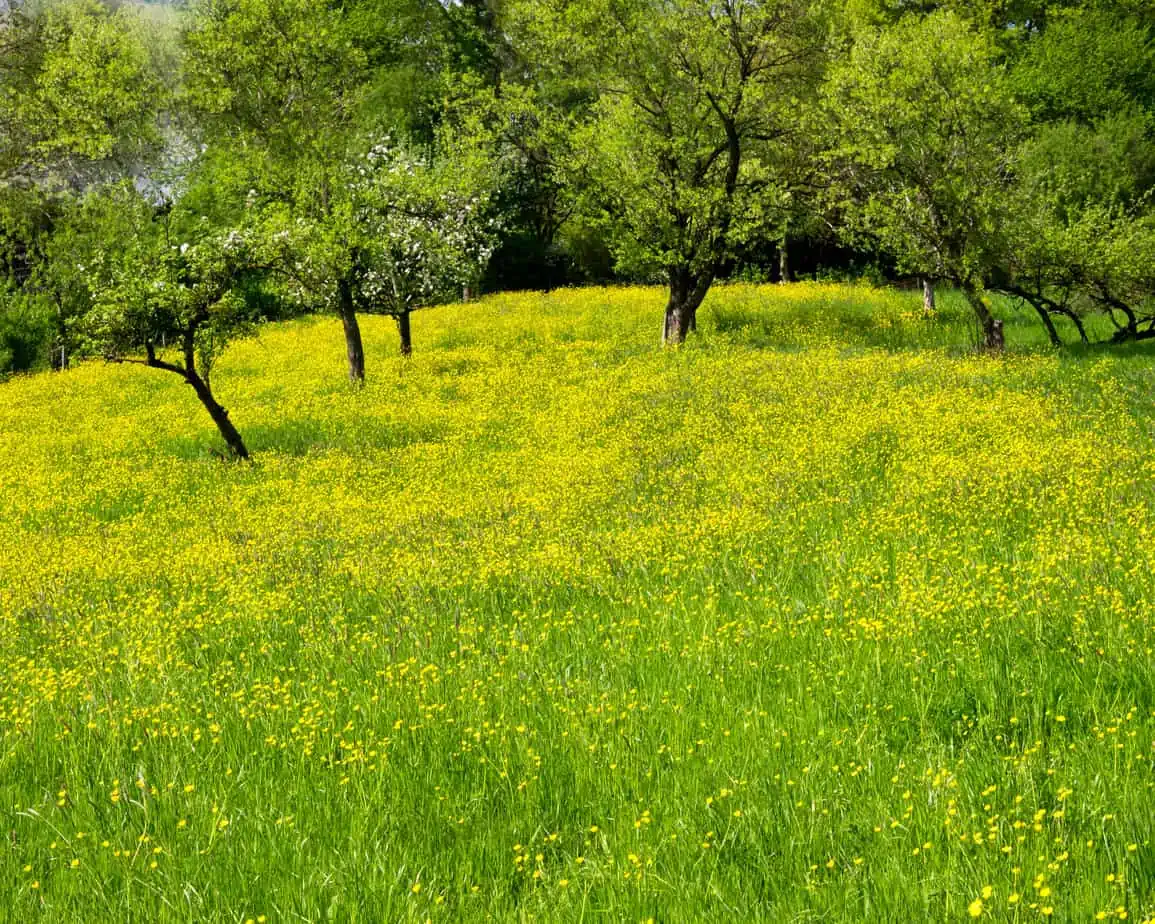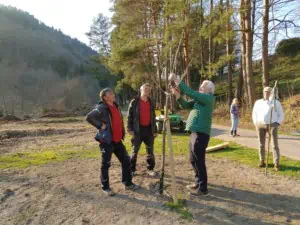Fruit tree care is part of greenkeeping
The mower stops at hole 15. Half obscured by the branches of a large apple tree, a greenkeeper stands on the seat of his mower this morning looking for his object of choice: the daily apple. He is lucky – on this golf course the fruit trees bear abundantly because they are taken care of. Fruit trees, always an eye-catcher on meadow orchards of golf courses in Germany, Austria or Switzerland, not only set visual and playful accents, in Germany they are also part of the intangible UNESCO World Cultural Heritage since 2021.
Care begins on the first day
Nevertheless, fruit tree care remains a problem: as beautiful as orchard meadows are, every single tree needs care from day 1. A look over many golf courses, however, shows: The branches are not trimmed, the barks are cracked, the leaves have fallen off. On a good half of all golf courses, at least in Germany, Hubert Kleiner, ex-chairman of the German Greenkeeper Association and fruit tree specialist, estimates that fruit trees are left to their own devices. “In this process, care begins with root pruning when the tree is planted and the first maintenance pruning, which determines how many branches the tree should have.”
The problem of proper treatment of golf courses, however, is the same on almost all golf courses. Greenkeeper training, anywhere in Europe, does not include fruit tree pruning. “Even in landscape gardener training, it’s not part of the basic training,” Kleiner sums up. For golf courses, this means: They must either outsource the trimming for a fee, train their greenkeeping staff, or turn to members who volunteer to do the job. In this context, more than 200 fruit trees on an 18-hole golf course are by no means uncommon.
Winter course for the greenkeeper
In terms of price, a single tree that has not been maintained for ten to 15 years can cost 20 to 40 euros per cut,” Kleiner calculates. In short, maintenance can add up. Kleiner therefore recommends two approaches: On the one hand, training courses for fruit tree pruning are offered by numerous gardening and fruit-growing associations. “In winter, a course for a greenkeeper is a good idea there, which usually lasts three to four days. The greenkeeper can then instruct the other greenkeepers.” Variant two is cooperation with a horticultural association, which either holds courses on the golf course or takes over the pruning with its experts for a fee.
If you make the golf course available for a course, there is no cost, but you have to live with the beginner’s mistakes in cutting the inexperienced course participants. “Of course, that doesn’t always work out right away,” Kleiner grins, but also points out that fruit tree pruning is an individual thing anyway, at least in parts. “There is, of course, a doctrinal view here, but different variations are possible.”
Prevent the death of trees
The worst thing, according to Kleiner, is doing nothing: “The tree eventually gives up on itself, becomes senile and stops growing. All the energy goes into the foliage, no more fruit comes. When the last foliage has fallen, the tree is dead.” In that case, it can only serve as deadwood for insects and birds.
The pruning of fruit trees is particularly often an issue when golf courses outsource greenkeeping to external companies. Classic greenkeeping contracts do not include fruit tree maintenance, and some clubs shy away from the additional expense.
With the right care, meadow orchards are a real asset for golf courses, where they are suitable in terms of climate and soil conditions. It is essential to clarify both before planting, because fruit trees also suffer from increasing water shortages in dry regions. According to Kleiner, the large, old pear trees in particular are suffering greatly. Strong temperature fluctuations lead to cracks in the bark, where pests can then settle.
In contrast, the image of avenues of fruit trees or large orchards, as many golf courses have them, is extremely attractive. In such cases, the maintenance effort has been worthwhile.








